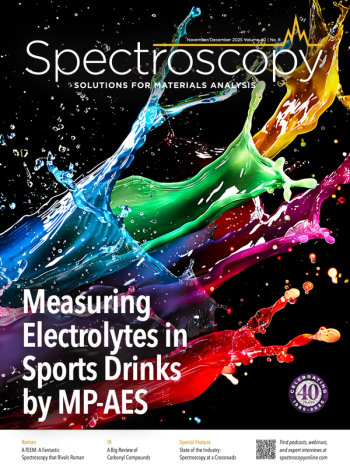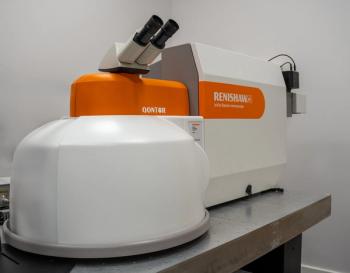
Revolutionizing Carbon Capture: A Novel Non-Aqueous Absorbent Offers Breakthrough Efficiency
A recent study examined a new method to carbon dioxide capture to reduce energy consumption.
Because of climate issues and other environmental concerns, humans are more acutely aware of the energy that they are consuming in their daily lives. Numerous steps have been taken by many people worldwide to reduce their energy consumption, which include using public transportation instead of driving, keeping the lights off in their homes, and reducing the use of their appliances.
Scientists are also exploring ways to reduce energy consumption as well. In a recent study published in Separation and Purification Technology, a research collaboration from scientists from the University of Edinburgh, City University of Hong Kong, University of Strathclyde, and Liaoning Petrochemical University investigated a novel approach to carbon dioxide (CO2) capture that promises to significantly reduce energy consumption while enhancing absorption capacity (1). Their study used molecular dynamics (MD) simulations to develop a novel non-aqueous absorbent system (1).
Carbon capture helps reduce carbon emissions, which is one of the strategies that can help mitigate the effects of carbon related climate issues (2). The process involves taking CO2 emissions from industrial processes and temporarily storing them underground in geological formations (2). The CO2 can then be released whenever it is needed.
Current technologies employing alkanolamine aqueous solutions for CO2 capture are highly energy-intensive and costly. As a result, this makes them less viable for widespread application (1). Researchers have explored how to improve the CO2 capture technology so that it requires less energy and doesn’t rely on a massive financial investment. In their study, the researchers focused on a tertiary amine-based system, combining N,N-dimethylethanolamine (DMEA) and ethylene glycol (EG), with various activators such as ethanolamine (MEA), ethylenediamine (EDA), and piperazine (PZ) (1).
The researchers tested several absorbent formulations. Among those tested, the DMEA-PZ-EG combination emerged as the most efficient, achieving an impressive CO2 absorption rate of 6.35 g-CO2/(kg-soln.·min.) and a capacity of 96.5 g-CO2/kg-soln (1). These figures represent increases of 230.1% and 206.35%, respectively, compared to a baseline DMEA-EG system (1). Furthermore, the DMEA-based absorbents reduced energy consumption. In comparison to conventional 30 wt% MEA solutions, the DMEA-based absorbents saw a 33.93–51.56% decrease in energy consumption (1).
As part of their study, the researchers used attenuated total reflectance Fourier transform infrared (ATR FT-IR) spectroscopy and nuclear magnetic resonance (NMR) spectroscopy to try and understand the improved performance. Both techniques helped the research team figure out that DMEA becomes protonated upon CO2 absorption, whereas EG undergoes deprotonation, forming carbonates that facilitate efficient CO2 capture (1).
One of the unique features of this study was the use of molecular dynamics (MD) simulations to predict and optimize the performance of CO2 absorbents. The researchers identified that as CO2 absorption progressed, the van der Waals (vdW) solubility parameters decreased to a minimum before stabilizing (1). This insight allowed the team to streamline the experimental screening process, focusing on promising activator combinations.
The researchers then conducted density functional theory (DFT) calculations to further understand the molecular interactions. The solvation free energy of DMEA-CO2 complexes was significantly lower when activators were present, enhancing the solubility of CO2 in the absorbent (1). This theoretical guidance enabled the optimization of molar ratios for maximum absorption and desorption efficiency (1).
The researchers also emphasized in their study how the DMEA-based absorbents also demonstrated great recyclability and thermal stability. Notably, the DMEA-PZ-EG system achieved a regeneration energy consumption of just 1.86 kJ/g CO2—substantially lower than the 3.84 kJ/g CO2 required by MEA solutions (1).
The desorption activation energy for this system was measured at 30.32 kJ/mole, indicating a weak interaction between CO2 and the absorbent, which facilitates efficient regeneration under mild conditions (343–353 K) (1).
As a result, by integrating theoretical and experimental methodologies, the study not only delivers a high-performing absorbent but also sets a new benchmark for developing next-generation CO2 capture solutions.
References
- Lu, G.; Wang, Z.; Yue, Z.; et al. A Novel Non-aqueous Tertiary Amine System for Low Energy CO2 Capture Developed via Molecular Dynamics Simulation. Sep. Pur. Technol. 2025, 354 Part 4, 128996. DOI:
10.1016/j.seppur.2024.128996 - National Grid, What is Carbon Capture and Storage? National Grid. Available at:
https://www.nationalgrid.com/stories/energy-explained/what-is-ccs-how-does-it-work (accessed 2025-01-14).
Newsletter
Get essential updates on the latest spectroscopy technologies, regulatory standards, and best practices—subscribe today to Spectroscopy.



